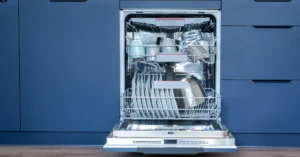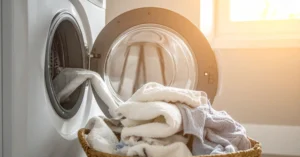Discovering a water leak in your San Diego home can quickly escalate from a minor inconvenience to a major emergency. Whether it’s a burst pipe, a failing water heater, or a hidden slab leak, how you respond in those critical first minutes can dramatically impact the extent of damage to your property and the ultimate cost of repairs.
At Solid Plumbing & Drain Inc., we’ve spent 20 years helping homeowners throughout San Diego County respond to and recover from plumbing emergencies. We’ve witnessed firsthand how proper emergency response can save thousands in damage while improper actions can inadvertently make situations worse.
In this comprehensive guide, you’ll discover the most effective emergency steps specifically tailored for San Diego homes facing water leaks. These proven approaches address our region’s unique challenges—from slab foundation construction to water pressure issues—and provide a clear action plan for minimizing damage while facilitating efficient repairs.
Understanding San Diego’s Unique Leak Challenges
Before diving into specific emergency steps, it’s important to understand why San Diego properties face distinctive leak challenges compared to homes in other regions.
Common Leak Sources in San Diego Homes
San Diego’s housing stock and environmental conditions create specific leak vulnerabilities:
-
Slab leaks: Particularly common in homes built between 1950-1980 with copper plumbing embedded in concrete foundations.
-
Pressure-related pipe failures: More frequent in hillside communities with significant elevation changes.
-
Pinhole leaks in copper pipes: Accelerated by San Diego’s hard water conditions.
-
Irrigation system failures: Common due to our year-round outdoor watering needs.
-
Water heater failures: Often occurring earlier than national averages due to water quality.
-
Washing machine hose ruptures: Frequently overlooked until catastrophic failure.
Understanding these common failure points helps prioritize emergency response actions based on the most likely source of your specific leak.
Construction Factors Affecting Leak Response
San Diego’s diverse construction styles influence both leak patterns and appropriate responses:
-
Slab foundations with embedded plumbing limit access and complicate repairs.
-
Post-tension concrete slabs in newer homes require specialized repair approaches.
-
Stucco exterior walls hide leaks longer, allowing more extensive damage before discovery.
-
Open floor plans in modern homes allow water to spread more rapidly across living spaces.
-
Multiple plumbing system types within single homes due to partial renovations.
-
Varying water pressure zones throughout the county affecting system stress.
These construction factors significantly influence which emergency steps are most effective for different San Diego neighborhoods and home styles.
Water Damage Progression in Southern California
San Diego’s climate creates unique patterns in how water damage develops:
-
Lower humidity allows faster evaporation of surface moisture, potentially hiding damage.
-
Warm temperatures accelerate mold growth once materials become saturated.
-
Stucco exterior walls can trap moisture, creating hidden damage.
-
Clay soils expand when wet, potentially causing foundation movement.
-
Rapid temperature changes between day and night can affect pipe expansion/contraction.
-
Drought conditions can cause soil shrinkage that stresses underground pipes.
Understanding these progression patterns helps prioritize protection efforts during the critical first response to a leak.
Emergency Step #1: Shut Off the Water Supply
The single most important action in any leak emergency is stopping the water flow as quickly as possible.
Locating Your Main Water Shutoff Valve
Every San Diego homeowner should know their shutoff valve location before an emergency occurs:
Most common locations in San Diego homes:
- Near the front property line in a ground-level box (typical in homes built after 1980).
- In the garage along the wall nearest the street (common in 1960s-1970s construction).
- Near the water heater (frequently found in older homes).
- Along the side of the house facing the street (typical in homes built before 1960).
- In the front yard near the city water meter (backup option if home valve is inaccessible).
Tools typically needed:
- Valve key or large adjustable wrench.
- Flashlight.
- Screwdriver (to remove cover plates).
- Gloves (for protection from insects or debris).
We recommend photographing your shutoff valve location and storing this image on your phone for quick reference during emergencies.
Shutoff Techniques for Different Valve Types
San Diego homes feature several common valve styles, each requiring specific techniques:
Gate valves (older homes):
- Turn clockwise (right) until firmly closed.
- May require significant force if not regularly exercised.
- Often benefit from penetrating oil if stiff.
Ball valves (newer homes):
- Turn handle 90 degrees until perpendicular to pipe.
- Should move easily with minimal force.
- Position of handle indicates status (parallel = open, perpendicular = closed).
Meter shutoffs (emergency backup):
- Require special meter key (available at hardware stores).
- Turn clockwise until firmly closed.
- May require permission from water authority in some districts.
Testing your shutoff valve annually ensures it will function properly during emergencies.
Fixture-Specific Shutoffs
When the leak is isolated to a specific fixture, using local shutoffs may be preferable:
-
Toilet supply lines: Oval or round handle behind toilet, turn clockwise.
-
Sink supply lines: Small handles under sink, turn clockwise.
-
Washing machine: Lever handles on supply hoses, turn perpendicular to hose.
-
Water heater: Valve on cold water inlet pipe, typically turn clockwise.
-
Dishwasher: Often shares shutoff with kitchen sink or has dedicated valve under sink.
-
Refrigerator ice maker: Small saddle valve on water supply line, turn clockwise.
Using fixture-specific shutoffs allows continued water use in unaffected areas of your home while addressing the leak.
Emergency Step #2: Protect Your Property and Possessions
Once water flow is stopped, immediate protective actions can significantly reduce damage.
Rapid Water Removal Techniques
Removing standing water quickly prevents further absorption and damage:
For small amounts:
- Towels and mops for surface water.
- Wet/dry vacuum for moderate amounts.
- Squeegees to direct water toward drains.
For significant flooding:
- Submersible pump (available for rent at equipment rental stores).
- Professional water extraction service (response time typically 1-3 hours in San Diego).
- Coordinated bucket brigade for multi-person households.
Special considerations:
- Direct water away from foundation when possible.
- Avoid electrical hazards from standing water.
- Prioritize rooms with valuable or sensitive items.
The first 24-48 hours are critical for preventing mold growth in San Diego’s climate, making rapid water removal essential.
Protecting Furniture and Belongings
Strategic protection of possessions prevents unnecessary losses:
Immediate actions:
- Place aluminum foil under furniture legs to prevent staining and damage.
- Remove small rugs and textiles from wet areas.
- Elevate furniture using plastic containers or wood blocks.
- Move electronics and valuable items to dry areas.
- Gather important documents and move to safe location.
For electronics:
- Disconnect power before moving.
- Do not test wet electronics.
- Remove batteries if possible.
- Position for maximum air circulation.
For wood furniture:
- Wipe excess water immediately.
- Move to low-humidity area if possible.
- Do not place in direct sunlight (common mistake in San Diego that causes warping).
These protective measures are particularly important in San Diego’s open floor plan homes where water can spread rapidly across living spaces.
Documenting Damage for Insurance
Proper documentation supports insurance claims:
-
Photograph all visible damage before cleanup.
-
Document the source of the leak if apparent.
-
Save samples of damaged materials when practical.
-
Note time and date of discovery.
-
Record all emergency actions taken.
-
Keep receipts for all emergency supplies purchased.
-
Log all communications with professionals and insurance representatives.
San Diego’s insurance adjusters typically request this documentation within 24-48 hours of the incident, making immediate documentation crucial.
Emergency Step #3: Address Electrical Safety Concerns
Water and electricity create dangerous combinations that require immediate attention.
Power Shutdown Procedures
When water affects electrical systems, safety becomes the priority:
If water is near electrical outlets or appliances:
- Shut off power at the main electrical panel if safe to do so.
- Use circuit breakers to isolate affected areas if possible.
- Never touch electrical switches or appliances while standing in water.
- Use a dry wooden broom handle to flip breakers if area around panel is damp.
Main electrical panel locations in San Diego homes:
- Garage (most common in homes built after 1970).
- Exterior wall (common in homes built 1950-1970).
- Utility room or hallway (found in some older homes).
Special considerations:
- Solar-powered homes may require additional shutdown steps.
- Homes with backup generators need generator shutdown.
- Some systems require utility company involvement.
- When in doubt about electrical safety, stay out of affected areas and call a professional.
Appliance and Electronics Safety
Water-affected appliances require specific handling:
Water heaters:
- Turn off power/gas before draining.
- Do not restart until professionally inspected if controls were submerged.
HVAC systems:
- Shut down immediately if water is near components.
- Do not restart until professionally inspected.
- Particular concern in San Diego homes with HVAC in attics or crawlspaces.
Kitchen appliances:
- Disconnect power before attempting to move.
- Do not test functionality until thoroughly dried and inspected.
- Consider professional assessment for high-value appliances.
- Attempting to operate water-damaged electrical equipment creates both safety hazards and potential for additional property damage.
Lighting and Ventilation Planning
Safe working conditions are essential during emergency response:
Establish safe lighting:
- Battery-powered flashlights or lanterns.
- Headlamps for hands-free operation.
- Avoid candles due to fire hazard.
Create ventilation:
- Open windows when weather permits.
- Use battery-powered fans to circulate air.
- Position fans to move air toward exits.
Safety equipment:
- Rubber boots for electrical protection.
- Gloves for handling wet materials.
- Respiratory protection if mold or contaminants are suspected.
These preparations are particularly important in San Diego’s older homes where electrical systems may not meet modern safety standards.
Emergency Step #4: Contact the Right Professionals
Knowing who to call—and in what order—significantly impacts both response time and outcome.
Emergency Plumbing Services
Selecting the right plumbing professional is critical:
Look for:
- 24/7 emergency service availability
- Specific experience with your type of leak
- Transparent pricing for emergency service
- Proper licensing and insurance
- Familiarity with San Diego’s unique plumbing challenges
Questions to ask:
- Estimated arrival time
- Emergency service rates and minimum charges
- Equipment they’ll bring for your specific situation
- Temporary solutions they can implement
What to prepare before they arrive:
- Clear access to leak area if possible
- Photos of the problem before water was shut off
- Information about previous plumbing work
- Location of shutoff valves and access points
Having a relationship with a reliable plumber before emergencies occur significantly improves response times and outcomes.
Water Damage Restoration Services
For significant leaks, restoration professionals should be contacted immediately:
Services provided:
- Professional water extraction
- Industrial drying equipment
- Moisture monitoring in walls and floors
- Antimicrobial application to prevent mold
- Documentation for insurance claims
Selection criteria:
- IICRC certification for water damage restoration
- 24/7 emergency response capability
- Experience with San Diego’s construction styles
- Direct billing to insurance when possible
- Guaranteed response time
Timing considerations:
- Most effective when started within 24 hours
- Critical in San Diego’s stucco and drywall construction where hidden moisture is common
- More important during humid coastal conditions than in drier inland areas
Professional restoration services typically cost $2,000-7,000 for moderate water damage in San Diego homes but save significantly more in prevented secondary damage.
Insurance Notification Procedures
Proper insurance communication improves claim outcomes:
Initial notification:
- Report claim within 24 hours (most policies require prompt notification)
- Request claim number and adjuster contact information
- Clarify emergency expense coverage before spending
- Document conversation details and representative names
Documentation needs:
- Photos before cleanup begins
- Video if possible showing active leaks
- List of damaged items
- Age and value estimates of affected property
Common coverage issues in San Diego:
- Slab leak coverage limitations
- Gradual damage exclusions
- Mold remediation caps
- Previous condition clauses
Many San Diego insurance adjusters can provide virtual claim initiation, allowing faster response than waiting for in-person assessment.
Emergency Step #5: Begin Initial Drying and Cleanup
While waiting for professionals, proper initial drying prevents secondary damage.
Effective Air Circulation Strategies
Strategic airflow accelerates drying:
Equipment options:
- Household fans positioned for cross-ventilation
- Dehumidifiers in enclosed spaces
- Open windows when outdoor humidity is lower than indoor
Placement strategies:
- Position fans to create circular airflow
- Direct air across wet surfaces, not directly at them
- Create ventilation tunnels in hallways
San Diego-specific considerations:
- Take advantage of dry daytime conditions
- Be aware of marine layer humidity in coastal areas
- Consider closing windows during humid evening hours in coastal communities
Effective air circulation can remove 15-20% of moisture before professional equipment arrives.
Safe Material Removal Techniques
Some materials require immediate removal to prevent further damage:
Carpeting and padding:
- Pull back to expose subfloor in affected areas
- Place on dry surface if salvageable
- Remove and dispose if heavily saturated
Baseboards:
- Remove carefully to allow wall cavity drying
- Label locations if salvageable
- Create small ventilation holes behind baseboard line if removal isn’t possible
Insulation:
- Remove wet fiberglass insulation
- Document quantity and type for replacement
- Allow wall cavities to dry completely before replacing
These removal techniques are particularly important in San Diego’s modern homes with drywall construction, where hidden moisture can lead to significant mold issues.
Preventing Mold Growth
San Diego’s climate requires specific mold prevention strategies:
Time sensitivity:
- Mold can begin growing within 24-48 hours of water exposure
- The sooner you address moisture, the better
- Effective drying within the first 48 hours is crucial
Mold prevention tools:
- Use antimicrobial agents on affected areas
- Maintain airflow and reduce humidity in affected spaces
- Consider mold-resistant materials for repair
San Diego-specific factors:
- Coastal humidity exacerbates mold growth
- Stucco homes are prone to hidden moisture accumulation in wall cavities
- Seasonal humidity fluctuations can contribute to mold if left unchecked
By acting quickly, you can prevent long-term mold issues that may not only damage property but also lead to health concerns.
Be Ready Before the Leak Happens
Water leaks in San Diego homes aren’t just plumbing problems—they’re urgent events that require smart, region-specific responses. From slab foundations to coastal humidity, our unique conditions demand preparation, fast action, and the right professional support.
By understanding local leak risks, knowing how to shut off your water, protecting your property, addressing electrical hazards, and calling the right experts, you can significantly reduce damage and recovery time.
Whether you’re reading this mid-crisis or planning ahead, now is the time to get prepared.
Take these final steps today:
- Locate and test your main shutoff valve
- Save contact info for your emergency plumber and restoration team
- Photograph your valve and store the image in your phone
- Schedule a professional inspection if your plumbing system is older or hasn’t been evaluated recently
Need help now or want to prepare for the future?
Contact Solid Plumbing & Drains Inc. for 24/7 emergency plumbing help or preventive leak inspections tailored to San Diego home



